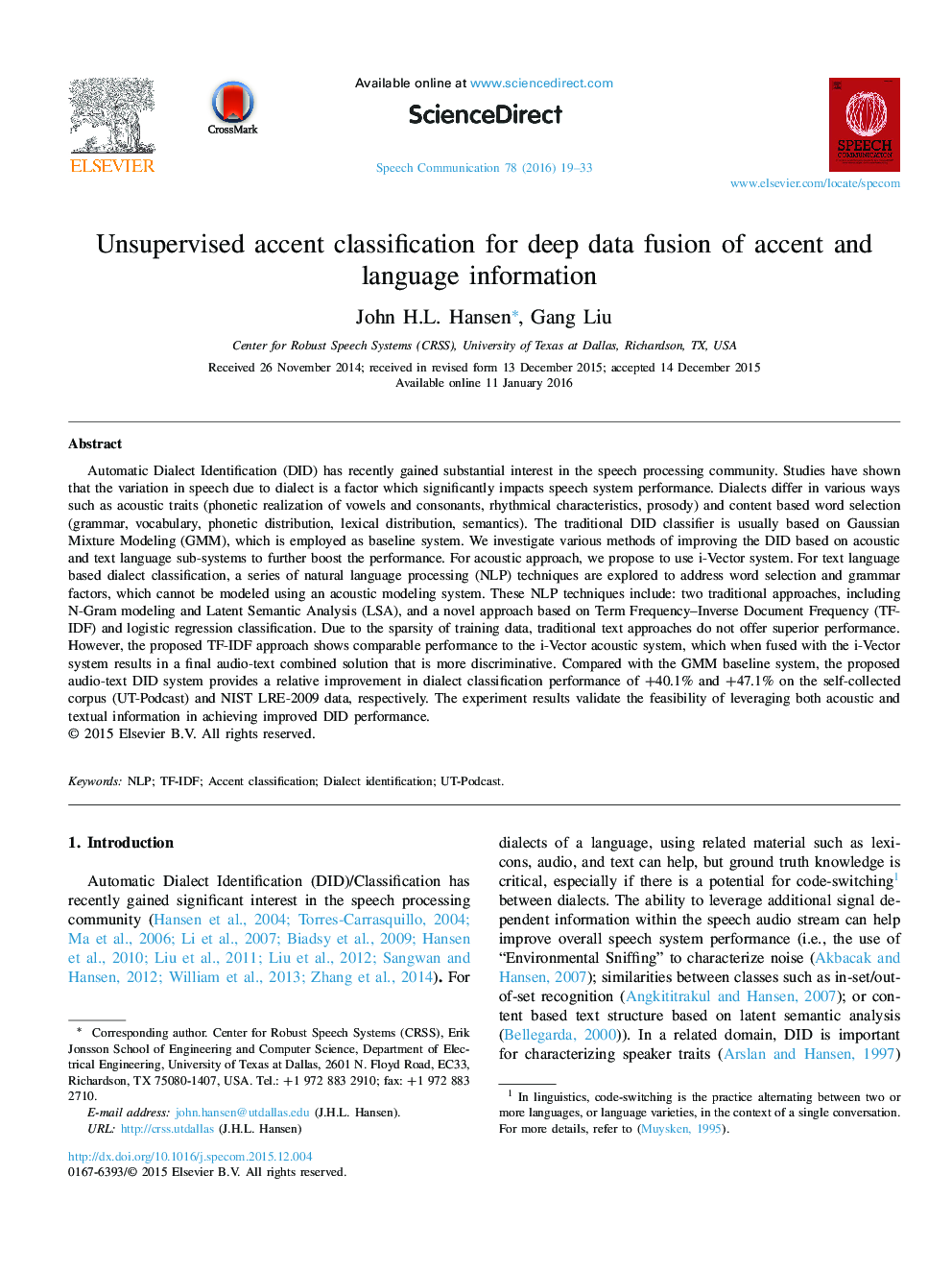| کد مقاله | کد نشریه | سال انتشار | مقاله انگلیسی | نسخه تمام متن |
|---|---|---|---|---|
| 565277 | 1452022 | 2016 | 15 صفحه PDF | دانلود رایگان |
Automatic Dialect Identification (DID) has recently gained substantial interest in the speech processing community. Studies have shown that the variation in speech due to dialect is a factor which significantly impacts speech system performance. Dialects differ in various ways such as acoustic traits (phonetic realization of vowels and consonants, rhythmical characteristics, prosody) and content based word selection (grammar, vocabulary, phonetic distribution, lexical distribution, semantics). The traditional DID classifier is usually based on Gaussian Mixture Modeling (GMM), which is employed as baseline system. We investigate various methods of improving the DID based on acoustic and text language sub-systems to further boost the performance. For acoustic approach, we propose to use i-Vector system. For text language based dialect classification, a series of natural language processing (NLP) techniques are explored to address word selection and grammar factors, which cannot be modeled using an acoustic modeling system. These NLP techniques include: two traditional approaches, including N-Gram modeling and Latent Semantic Analysis (LSA), and a novel approach based on Term Frequency–Inverse Document Frequency (TF-IDF) and logistic regression classification. Due to the sparsity of training data, traditional text approaches do not offer superior performance. However, the proposed TF-IDF approach shows comparable performance to the i-Vector acoustic system, which when fused with the i-Vector system results in a final audio-text combined solution that is more discriminative. Compared with the GMM baseline system, the proposed audio-text DID system provides a relative improvement in dialect classification performance of +40.1% and +47.1% on the self-collected corpus (UT-Podcast) and NIST LRE-2009 data, respectively. The experiment results validate the feasibility of leveraging both acoustic and textual information in achieving improved DID performance.
Journal: Speech Communication - Volume 78, April 2016, Pages 19–33
